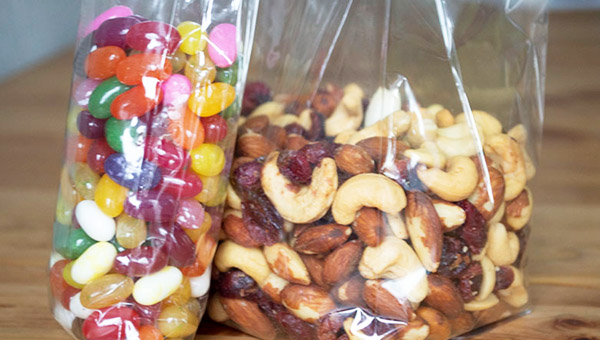Customizing compostable product
If people have been looking into environmentally-friendly packaging material, chances are people have heard of cellulose, also known as cellophane.
Cellophane is a clear, crinkly material that has been around since the early 1900s. But, it might surprise people to learn that cellophane, or cellulose film packaging, is plant-based, compostable, and a truly “green” product.

Cellulose film packagingWhat is cellulose packaging?Discovered in 1833, cellulose is a substance located inside the cell walls of plants. It’s composed of a long chain of glucose molecules, making it a polysaccharide (the scientific term for carbohydrate).
When several cellulose chains of hydrogen bond together, they form into something called microfibrils, which are incredibly inflexible and tough. The rigidity of these microfibrils makes cellulose an excellent molecule to use in bioplastic production.
Moreover, cellulose is the most plentiful biopolymer in the entire world, and its particles have minimal environmental impacts. Though there are several different forms of cellulose. Cellulose food packaging is usually cellophane, a clear, thin, biodegradable plastic-like material.
How are cellulose film packaging products made?Cellophane is created from the cellulose taken from cotton, wood, hemp, or other sustainably harvested natural sources. It starts as a white dissolving pulp, which is 92%–98% cellulose. Then, the raw cellulose pulp goes through the following four steps to be converted into cellophane.
1. The cellulose is dissolved in an alkali (the basic, ionic salt of an alkaline metal chemical) and then aged for several days. This dissolving process is called mercerization.
2. Carbon disulfide is applied to the mercerized pulp to create a solution called cellulose xanthate, or viscose.
3. This solution is then added to a mixture of sodium sulfate and dilute sulfuric acid. This turns the solution back into cellulose.
4. Then, the cellulose film goes through three more washes. First to remove the sulfur, then to bleach the film, and finally to add glycerin for durability.
The end result is cellophane, which is used in the food packaging industry, primarily to create biodegradable cellophane bags or "cello bags".
What are the benefits of cellulose products?While the process of creating cellulose packaging is complicated, the benefits are clear.
Americans use 100 billion plastic bags annually, requiring 12 billion barrels of oil every single year. Beyond that, 100,000 marine animals are killed via plastic bags each year. It takes more than 20 years for petroleum-based plastic bags to degrade in the ocean. When they do, they create micro-plastics that further penetrate the food chain.
As the society grows more environmentally conscious, YITO continue to search for eco-friendly, biodegradable alternatives to petroleum-based plastics.
Aside from being a plastic alternative, cellulose film packaging presents a lot of environmental benefits:
Sustainable & bio-basedBecause cellophane is created from cellulose harvested from plants, it is a sustainable product sourced from bio-based, renewable resources.
BiodegradableCellulose film packaging is biodegradable. Tests have shown that cellulose packaging biodegrades in 28–60 days if the product is uncoated and 80–120 days if coated. It also degrades in the water in 10 days if it’s uncoated and around a month if it’s coated.
Compostable Cellophane is also it’s safe to put in people's compost pile at home, and it doesn’t require a commercial facility for composting.
The food packaging benefits:
Low-costCellulose packaging has been around since 1912, and it’s a byproduct of the paper industry. Compared with other eco-friendly plastic alternatives, cellophane has a low cost.
Moisture-resistantBiodegradable cellophane bags resist moisture and water vapor, making them an excellent choice for displaying and storing food items.
Oil-resistantThey naturally resist oils and fats, so cellophane bags are great for baked goods, nuts, and other greasy foods.
Heat sealableCellophane is heat sealable. With the right tools, people can quickly and easily heat seal and protect food products stored in cellophane bags.
What is the future of cellulose packaging?The future of cellulose film packaging looks bright. A Future Market Insights report predicts cellulose packaging will have a compound annual growth rate of 4.9% between 2018 and 2028.
Seventy percent of that growth is expected to take place in the food and beverage sector. Biodegradable cellophane packaging film and bags being the highest expected growth category.

Original ressource: https://www.yitopack.com/news/guide-to-cellulose-packaging/
Media Contact
Company Name: HuiZhou YITO Packaging Co., Ltd.
Email: Send Email
Phone: +86-15975086317
Country: China
Website: https://www.yitopack.com/













